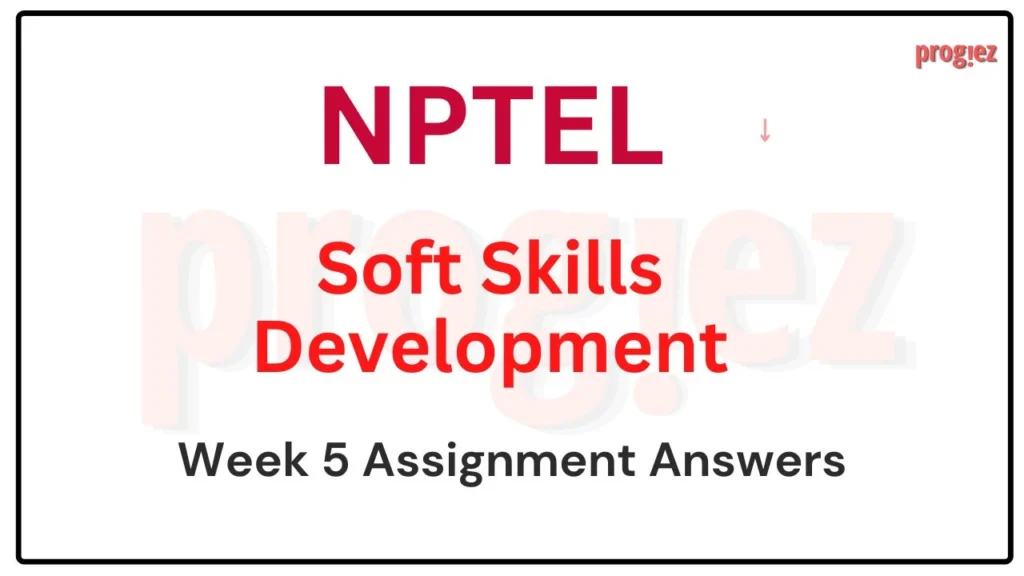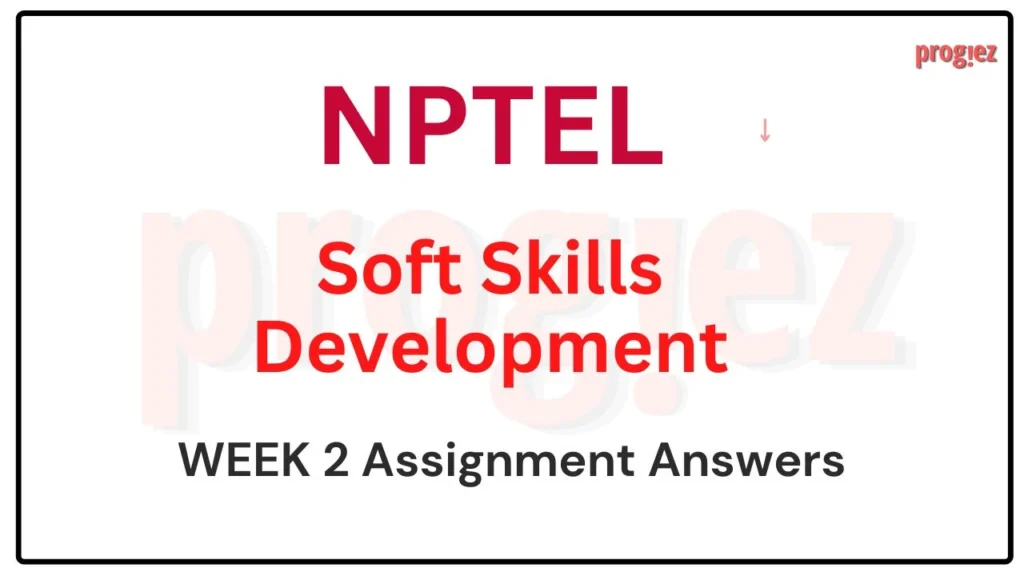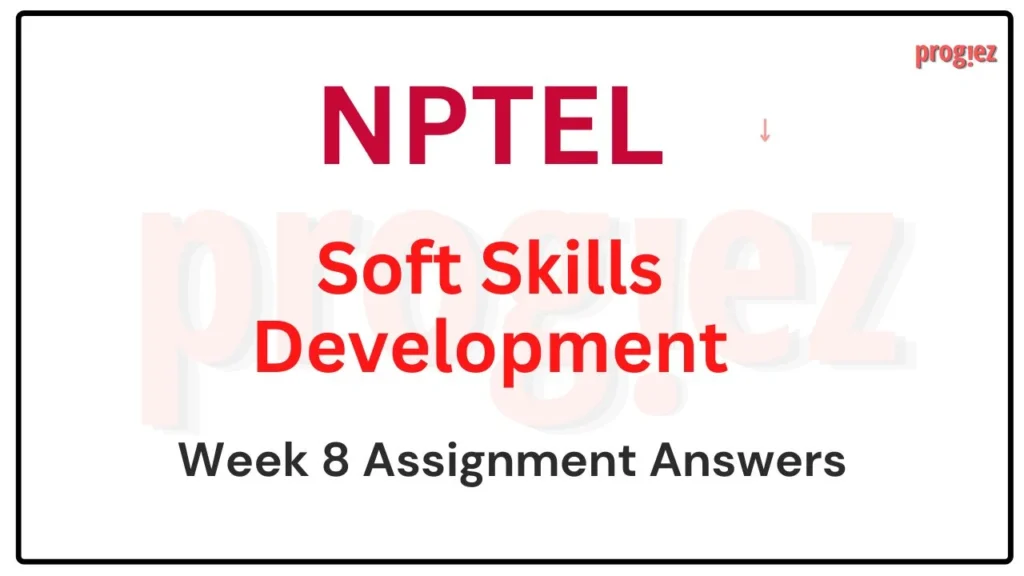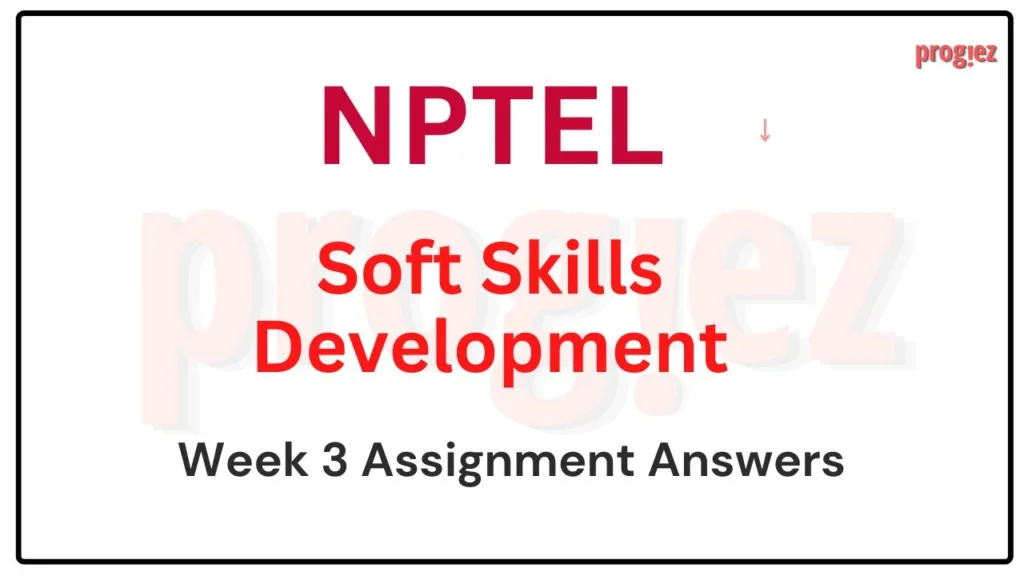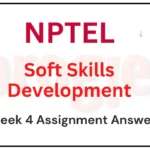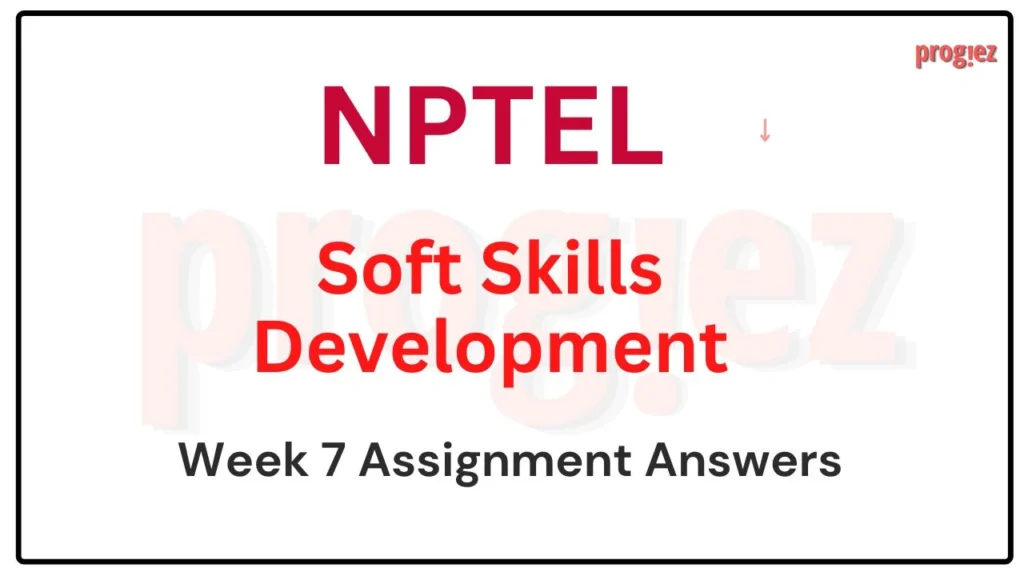Soft Skill Development Week 6 Nptel Assignment Answers
Are you looking for the NPTEL Soft Skill Development Week 6 Nptel Assignment Answers 2024? This resource provides comprehensive solutions to help you enhance your understanding of key soft skills, including communication, teamwork, and emotional intelligence.
Course Link: Click Here
Table of Contents
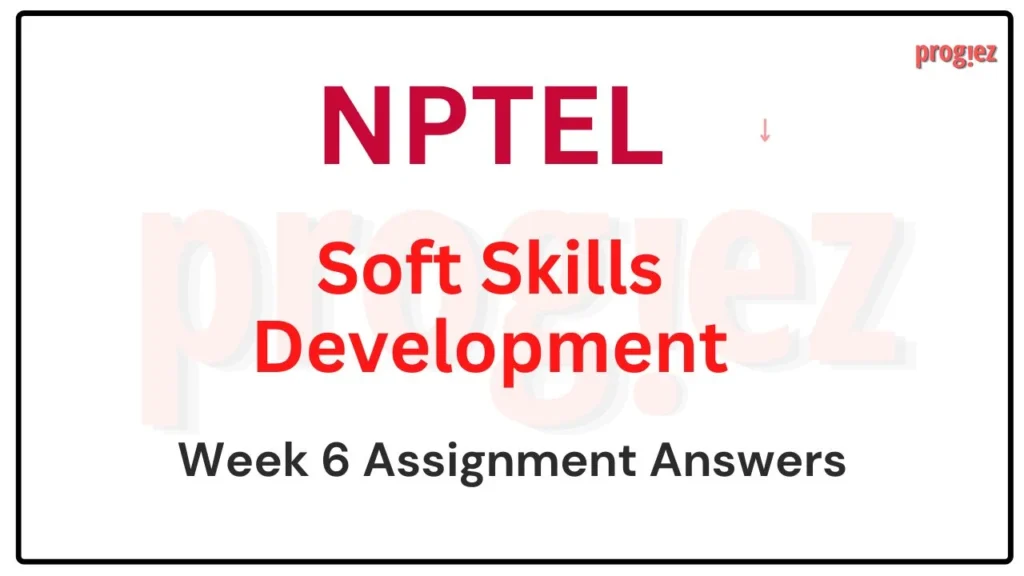
Soft Skill Development Week 6 Nptel Assignment Answers (JULY – DEC 2024)
1. Creativity in the organization is not a linear process. Is the statement true?
A) True
B) False
Answer: A) True
2. Organizations must understand what inhibits creativity and innovation to foster a creative climate in the organization.
A) Yes
B) No
Answer: A) Yes
3. Creativity flourishes more in individuals than in collective endeavours.
A) True
B) False
Answer: B) False
4. In the year _, Schaude developed Semantic intuition.
A) 1979
B) 1978
C) 1987
D) 1897
Answer: B) 1978
5. Which of the following methods for generating creative ideas?
A) Trial and error
B) Means-end analysis
C) Analogies
D) Schema
A) Only A is correct
B) Only A, and B are correct
C) Only A, B, and C are correct
D) All A, B, C, and D are correct
Answer: D) All A, B, C, and D are correct
These are Soft Skill Development Week 6 Answers
6. The six thinking hats approach was forwarded by __.
A) Schaude
B) Edward De Bono
C) Goleman
D) Freud
Answer: B) Edward De Bono
7. Which of the following is not a component of creativity?
A) Novelty
B) Originality
C) Usefulness
D) Negotiation
Answer: D) Negotiation
8. The socialization process facilitates us to use our which part of the brain frequently?
A) Right hemisphere
B) Left hemisphere
C) Both right and left hemispheres
D) None of the above
Answer: B) Left hemisphere
9. Which of the following among the big five personality traits is mostly found in creative persons?
A) Openness to experience
B) Conscientiousness
C) Neuroticism
D) Extraversion
E) Agreeableness
Answer: A) Openness to experience
10. _ in decision-making can lead to overconfidence and potential errors.
A) Thorough analysis
B) Confirmation bias
C) Diverse perspectives
D) None of the above
Answer: B) Confirmation bias
11. Black Hat thinking is most concerned with _.
A) Generating creative ideas
B) Highlighting potential risks and weaknesses
C) Encouraging emotional expression
D) Developing a positive outlook
Answer: B) Highlighting potential risks and weaknesses
12. Which of the following best demonstrates the use of combo chatter to enhance creativity in conversations?
A) Generating responses that strictly follow a pre-defined script
B) Providing multiple, diverse responses to a thread of conversation
C) Translating different contexts one another interchangeably
D) Filtering out irrelevant responses to focus on the main topic
Answer: B) Providing multiple, diverse responses to a thread of conversation
13. Consider the following statements.
A: Intelligence without empathy can lead to unethical decisions.
B: Intelligence can flourish even in the absence of emotional intelligence.
A) Both A and B are correct
B) Neither A nor B are correct
C) Only A is correct
D) Only B is correct
Answer: C) Only A is correct
14. Consider the following statements.
A: Mind mapping involves organizing ideas around a central concept to facilitate brainstorming.
B: Heuristic thinking guarantees accurate and optimal solutions.
A) Both A and B are correct
B) Neither A nor B are correct
C) Only A is correct
D) Only B is correct
Answer: C) Only A is correct
15. Organizational barriers to creativity can be overcome. Choose the correct ways to resolve the barriers.
A. Make innovation part of everyone’s performance review system
B. Train staff to scan the environment for new trends
C. Develop an idea management system that captures ideas
D. Encourage fear
A) Only A is true
B) Only A, B, and D are true
C) Only A, B, and C are true
D) All A, B, C, and D are true
Answer: C) Only A, B, and C are true
These are Soft Skill Development Week 6 Nptel Assignment Answers
Soft Skills NPTEL All weeks: Click Here
For answers to additional Nptel courses, please refer to this link: https://progiez.com/nptel-assignment-answers
Soft Skill Development Week 6 Nptel Assignment Answers (JAN-APR 2024)
Course name: Soft Skills Development
Course Link: Click Here
These are Soft Skill Development Week 6 Answers
Q1. Which part does education play in fostering creativity?
(a) Incubation
(b) Preparation
(c) Illumination
(d) Insight
Answer: (b) Preparation
Q2. The relationship between the “flying machine” and the modern-day aeroplane is one of
(a) Free-association
(b) Divergent thinking
(c) Analytical thinking
(d) Analogy
Answer: (d) Analogy
Q3. Consider the following statements.
A: Intelligence without attentiveness is akin to having an average car with a poor driver.
B: The destructive potential of intelligence can be channeled into creativity.
(a) Both A and B are correct
(b) Neither A nor B are correct
(c) Only A is correct
(d) Only B is correct
Answer: (d) Only B is correct
For answers or latest updates join our telegram channel: Click here to join
These are Soft Skill Development Week 6 Answers
Q4. _______ on earlier knowledge can potentially restrict creativity.
(a) Dependence
(b) Divergence
(c) Fixation
(d) None of the above
Answer: (c) Fixation
Q5. Red hat thinking is not relevant in _______.
(a) Decision making
(b) Creative writing
(c) Problem solving
(d) None of the above
Answer: (d) None of the above
Q6. Which of the following personality traits may be commonly found in creative people?
A: ability to remain comfortable with uncertainty
B: ability to accept failure
C: ability to hide negative aspects of their life
(a) A and B
(b) B and C
(c) A
(d) B
Answer: (a) A and B
For answers or latest updates join our telegram channel: Click here to join
These are Soft Skill Development Week 6 Answers
Q7. “Imported talent” syndrome
(a) may result in a spurt of growth for the company with a surge in creative ideas
(b) may demotivate the insiders of the company
(c) may attract new talents from outside to take up creative roles
(d) All of the above
Answer: (b) may demotivate the insiders of the company
Q8. The element of _______ in brainstorming encourages team members to think of preposterous and outrageous notions.
(a) piggy-backing
(b) non-judgement
(c) freewheeling
(d) choosing quantity over quality
Answer: (c) freewheeling
Q9. Consider the following statements.
A: Attribute listing is where a new idea or product is formed after a reshuffling of the attributes of the existing idea.
B: Heuristic thinking shares a closer affinity to survival instinct than critical or analytical thinking.
(a) Both A and B are correct
(b) Neither A nor B are correct
(c) Only A is correct
(d) Only B is correct
Answer: (a) Both A and B are correct
For answers or latest updates join our telegram channel: Click here to join
These are Soft Skill Development Week 6 Answers
Q10. Which of the following is not a false assumption that people have on creativity?
(a) Horse for courses — there should be a dedicated team of idea generation because creativity is not everyone’s cup of tea
(b) People who are good at generating new ideas need to be managed separately owing to their psychological proclivity towards disruptive activities
(c) Strictly technical departments do not have much room for creativity
(d) Some people may be low in innovation but everyone has a spark of creativity
Answer: (d) Some people may be low in innovation but everyone has a spark of creativity
Q11. Why is “mindmix” an important element for innovation?
A: Mixing ideas together always gives us new ideas
B: The left brain cannot process what the right brain can
C: Both the left brain and right brain are involved in idea production and analysis
(a) A and C
(b) A and B
(c) B and C
(d) C
Answer: (c) B and C
Q12. Daydreaming about an issue as a reflective thinking skill does not have any relation with our ability of critical thinking that is rooted in the concrete reality.
(a) True
(b) False
Answer: (b) False
For answers or latest updates join our telegram channel: Click here to join
These are Soft Skill Development Week 6 Answers
Q13. Which of the following are elements of critical thinking?
A: focusses on a specific problem
B: takes more time than memory tasks
C: deploys multipronged analytical methods
D: bypasses reasoning
(a) A, B and D
(b) A and C
(c) B and C
(d) C and D
Answer: (c) B and C
Q14. Key to long term learning is _________.
(a) Teachers
(b) Self-motivation
(c) Self-reliance
(d) All of the above
Answer: (b) Self-motivation
These are Soft Skill Development Week 6 Answers
Q15. Looking through the eyes of a child induces us to be ______ and _______.
(a) critical, curious
(b) curious, observant
(c) wondering, naïve
(d) None of the above
Answer: (b) curious, observant
For answers or latest updates join our telegram channel: Click here to join
These are Soft Skill Development Week 6 Answers
More Weeks of Soft Skills Development: Click here
More Nptel Courses: https://progiez.com/nptel-assignment-answers
These are Soft Skill Development Week 6 Answers
